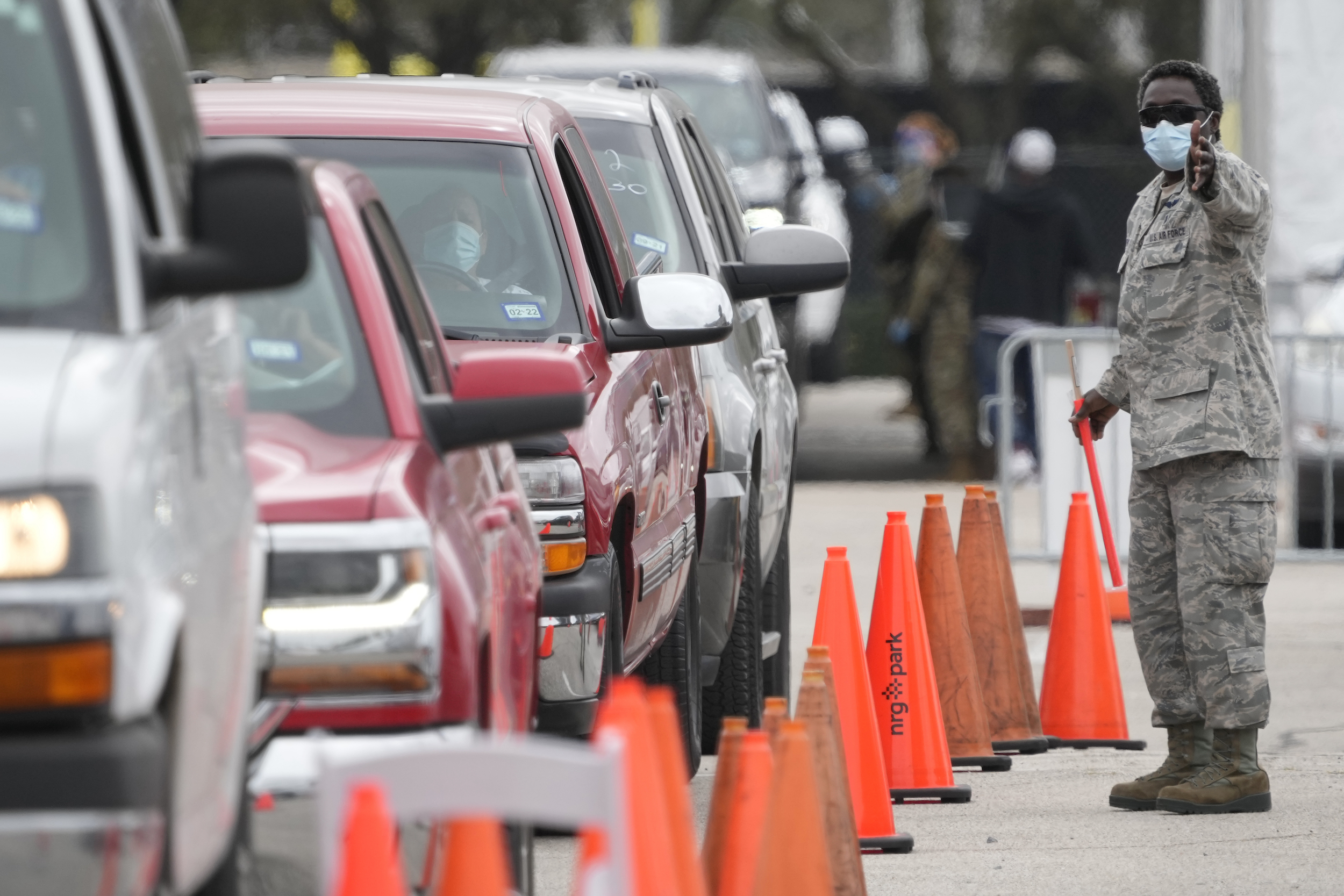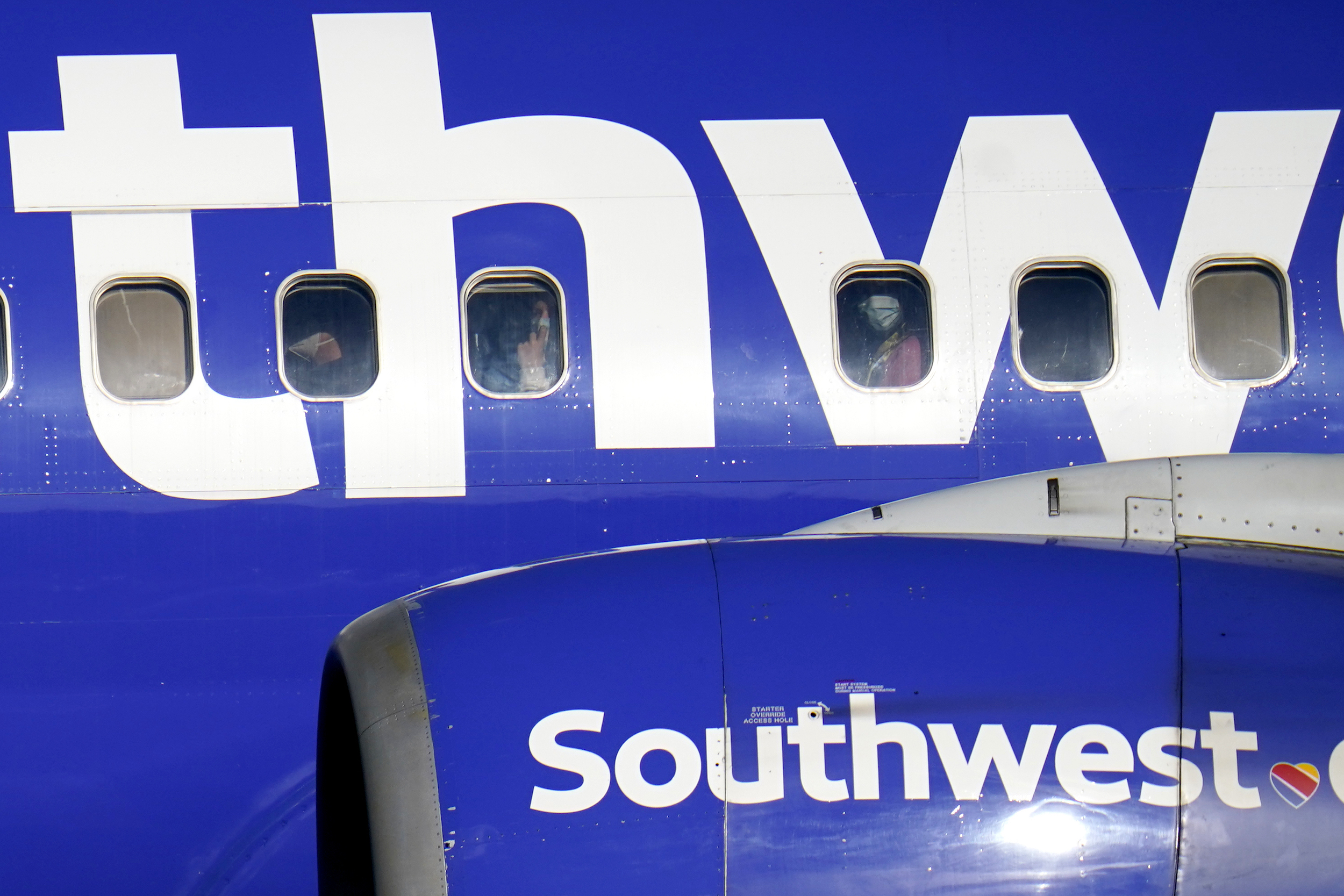 Covering COVID-19 is a daily Poynter briefing of story ideas about the coronavirus and other timely topics for journalists, written by senior faculty Al Tompkins. Sign up here to have it delivered to your inbox every weekday morning.
Covering COVID-19 is a daily Poynter briefing of story ideas about the coronavirus and other timely topics for journalists, written by senior faculty Al Tompkins. Sign up here to have it delivered to your inbox every weekday morning.
For the first time in my more than four-and-a-half decades as a journalist, today I am writing a column that covers both a pandemic and an epidemic.
The response to the COVID-19 pandemic is complicated by mistrust and misreporting by one of the drug companies that is producing vaccines for millions of people around the world.
The epidemic of gun violence cannot be cured by an injection or a mask and socially distancing ourselves from that problem won’t solve it. We have tried that approach.
What’s going wrong with the AstraZeneca vaccine?
Just when we need to be able to trust the safety and effectiveness of COVID-19 vaccines, AstraZeneca planted more seeds of doubt about its vaccine. We learned this week that the drug company appears to have released “outdated” data about its vaccine when it said Monday the vaccine had:
- 79% vaccine efficacy at preventing symptomatic COVID-19
- 100% efficacy against severe or critical disease and hospitalization
- Comparable efficacy results across ethnicity and age, with 80% efficacy in participants aged 65 years and over
- Favorable reactogenicity and overall safety profile
On Tuesday, AstraZeneca said those results come from an “interim analysis” of data that ran through Feb. 17 and that it will provide data that is more recent “within 48 hours.”
This matters because there are reports circulating that the newest data shows the AstraZeneca vaccine may be 69 to 74% effective — still fairly high as these kinds of vaccines go, but not as effective as other vaccines approved for use in the United States.
Then there is concern about whether the AstraZeneca vaccine has any connection to blood clots. More than a dozen European countries paused distribution of the vaccine for a week while researchers looked into the concerns. So far, there is no clinical evidence of a connection with clotting problems, but the steady questions about the vaccine are making it more difficult to convince a skeptical public to get vaccinated.
AstraZeneca put its vaccine clinical trial on hold last fall after concern arose over another symptom that was later found to not be connected with the vaccine. It is not unusual for drug trials to pause while researchers look into potential problems, but doubts arise when that pause is accompanied by so many other questions.
We should point out that about 17 million doses of the AstraZeneca vaccine have been administered in the United Kingdom and across Europe with very few problems reported. In fact, the problems that have been reported are fewer than you would expect to find in normal times with no vaccine. AstraZeneca reports:
So far across the EU and UK, there have been 15 events of Deep Vein Thrombosis (DVT) and 22 events of pulmonary embolism reported among those given the vaccine, based on the number of cases the Company has received as of 8 March. This is much lower than would be expected to occur naturally in a general population of this size and is similar across other licensed COVID-19 vaccines. The monthly safety report will be made public on the European Medicines Agency website in the following week, in line with exceptional transparency measures for COVID-19.
AstraZeneca’s vaccine has not been approved for use in the United States and it could be that the U.S. will not need the drug to vaccinate the American population. President Joe Biden has agreed to send the vaccine to Mexico and Canada, even while it is not approved for use here.
All adults are now eligible for vaccines in a number of states

A member of the U.S. Air Force directs patients after they received a COVID-19 vaccination at a FEMA vaccination site, Feb. 24, 2021, in Houston. All adult Texans are now able to sign up for a vaccine. (AP Photo/David J. Phillip)
Texas, Georgia, Mississippi, West Virginia and Alaska are part of a growing list of states that have opened vaccine registrations to all adults. Utah opens to everyone today. Tennessee opens to all adults on April 5.
It is extraordinary how quickly distribution has changed from a few weeks ago when seniors could not find vaccines. Soon, nearly anyone will be able to.
On Friday, North Carolina will join states that have lifted restrictions on gatherings, restaurants and bars.
[the_ad id=”667826″]
Is it true that an assault weapons ban reduces mass killings?
A judge in Boulder, Colorado, blocked an assault weapons ban 10 days before a man with what is believed to be an AR-556 assault weapon killed 10 people at a Boulder grocery store. The city banned assault weapons in 2018 but Boulder County District Court Judge Andrew Hartman wrote that the court found “only Colorado state (or federal) law can prohibit the possession, sale and transfer of assault weapons and large capacity magazines.”
The city of Boulder also banned ammunition magazines capable of accepting more than 10 rounds, which is stricter than the state of Colorado’s limit of 15-round magazines.
The judge said if cities could enact their own bans, it “could create a ripple effect across the state by encouraging other municipalities to enact their own bans, ultimately leading to a statewide de facto ban or to a patchwork of municipal laws regulating assault weapons and (large capacity magazines).”
President Biden is asking Congress to pass a national ban on assault weapons because he says a previous ban, which he sponsored, “worked” in reducing mass killings.
Here is how the ban in 1994 worked, from a Justice Department summary:
Title XI, Subtitle A of the Violent Crime Control and Law Enforcement Act of 1994 imposed a 10-year ban on the “manufacture, transfer, and possession” of certain semiautomatic firearms designated as assault weapons (AWs). The ban is directed at semiautomatic firearms having features that appear useful in military and criminal applications but unnecessary in shooting sports or self-defense (examples include flash hiders, folding rifle stocks, and threaded barrels for attaching silencers).
The law banned 18 models and variations by name, as well as revolving cylinder shotguns. It also has a “features test” provision banning other semiautomatics having two or more military-style features. In sum, the Bureau of Alcohol, Tobacco, Firearms, and Explosives (ATF) has identified 118 models and variations that are prohibited by the law. A number of the banned guns are foreign semiautomatic rifles that have been banned from importation into the U.S. since 1989.
The ban included large-capacity magazines, which means feeders that hold multiple rounds, usually defined as 10 rounds or more. Some states now have more strict standards.
Here is where the assault weapon ban will run into problems. The 1994 ban exempted the more than 1.5 million “assault rifles” that were already in circulation. Since that ban expired, one of the weapons that would have been covered has grown to become the most popular rifle sold in the United States — the AR-15 style rifle. Any exemption of existing weapons would mean that millions of assault weapons would remain legal, and there are maybe hundreds of millions of large-capacity magazines in the hands of private owners.
The other point that an assault weapon ban misses is that AR-15s are not the most commonly used weapon in crimes. Pistols are. It was true in 1994 and is still true. In 1994, the DOJ said assault weapons were used in 2% to 8% of gun crimes but that large-capacity magazines were used in 14% to 26% of gun crimes.
Then evidence that the assault weapons ban led directly to a lower gun crime rate is not as clear as President Biden says. The DOJ found that people started using different kinds of weapons rather than bulky rifles, particularly pistols with large-capacity magazines. The DOJ’s report puts it this way:
Should it be renewed, the ban’s effects on gun violence are likely to be small at best and perhaps too small for reliable measurement. Assault weapons were rarely used in gun crimes even before the ban. Large capacity magazines are involved in a more substantial share of gun crimes, but it is not clear how often the outcomes of gun attacks depend on the ability of offenders to fire more than ten shots (the current magazine capacity limit) without reloading.
Nonetheless, reducing criminal use of assault weapons and especially large capacity magazines could have nontrivial effects on gunshot victimizations.
Gun advocates are sensitive to the phrase “assault weapon,” which they point out is a reference to a military rifle that can be either automatic or semi-automatic. That is true. But when the federal statute defined “assault weapons” as having unique qualities described above, the phrase took on a new meaning beyond the pure military definition. Journalists should understand that people who own these rifles now commonly call them “sporting rifles” because the phrase is less controversial, but it is also true that they are incredibly accurate at long distances and can be used in target sports as well as hunting.
“60 Minutes” did an exceptionally good job explaining why the AR-15 is so devastatingly injurious.
Journalists, be alert to the references to mental illness and mass killers
Family members told reporters that the man who was arrested in the Boulder shootings has a history of mental illness. While that may turn out to be accurate and important, it is also important that journalists keep something in context: People who suffer from mental illness are far more likely to be victims of violence than to be violent themselves.
A National Crime Victimization Survey interviewed 936 patients with “chronic and severe mental illnesses.” Among them, “more than one quarter … had been victims of a violent crime in the past year, a rate more than 11 times higher than the general population.”
Of course, the general description of “mental illness” can refer to anything from mild depression to extreme psychosis. It is analogous to saying a person is “sick,” which could describe everything from a cold to cancer.
And just describing somebody as having symptoms of mental illness do not give us enough information to know if the person is receiving care and/or medication, which can be vitally important.
Researchers Jonathan M. Metzl and Kenneth T. MacLeish wrote in 2015:
Connections between mental illness and gun violence are less causal and more complex than current US public opinion and legislative action allow. US gun rights advocates are fond of the phrase “guns don’t kill people, people do.”
Neither guns nor people exist in isolation from social or historical influences. A growing body of data reveals that US gun crime happens when guns and people come together in particular, destructive ways. That is to say, gun violence in all its forms has a social context, and that context is not something that “mental illness” can describe nor that mental health practitioners can be expected to address in isolation.
Researchers do point to a definitive connection between mental illness and gun deaths in one way: suicides. Keep in mind that the Centers for Disease Control and Prevention says more Americans die by using guns in suicide than die by criminal gunfire. Researchers say:
Media accounts of mass shootings by disturbed individuals galvanize public attention and reinforce popular belief that mental illness often results in violence. Epidemiologic studies show that the large majority of people with serious mental illnesses are never violent. However, mental illness is strongly associated with increased risk of suicide, which accounts for over half of US firearms–related fatalities.
[the_ad id=”667872″]
Post-pandemic airfares are really low and rising fast

A traveler walks with a suitcase through the terminal at Washington Reagan National Airport, Wednesday, Nov. 21, 2018, in Arlington, Va. (AP Photo/Carolyn Kaster)
If you have any intention or hope of scoring low airfares for a vaccine celebration trip, you better jump on it now. Rates are rising.
“Domestic airfares are rising. While discounts can still be found, they’re no longer falling into consumers’ laps,” said Jamie Baker, JP Morgan airline analyst. “Discounted fares increasingly require a hunt, and for many consumers that have been locked up for a year, they’re probably not up to the effort.”
The cheapest domestic leisure airfares, which include those promotional fares that airlines send to your inbox, were $59.48 as of March 15, still 26% lower than a similar week in 2019 but up more than 6% on the week, according to Harrell Associates, a firm that tracks airfares. Average leisure fares were nearly $187, up close to 5% on the week and close to 9% higher than a similar point in 2019.
One reason airlines can raise prices is that they have fewer planes in the sky. As demand increases, they will put more planes on the schedule. Domestic travel is, of course, the name of the game right now, so destinations like Orlando, Las Vegas and such are booking heavier. Hotels are slowly booking up but are still way below pre-pandemic levels.
The Star Tribune points to another reason to book flights before April:
At the end of March, major airlines will roll back the freedom to change tickets purchased at the basic economy rate. Those fares offer the lowest available price but deny the usual niceties such as choosing a seat at the time of booking.
Basic economy tickets booked by March 30 at Delta or March 31 at United or American will be changeable and incur no change fee, carrying on a pandemic-inspired benefit that had given reluctant fliers a safety net. After those dates, fliers holding basic economy tickets will need to use those tickets as booked or lose them.
At the end of March, major airlines will roll back the freedom to change tickets purchased at the basic economy rate. Those fares offer the lowest available price but deny the usual niceties such as choosing a seat at the time of booking.
Basic economy tickets booked by March 30 at Delta or March 31 at United or American will be changeable and incur no change fee, carrying on a pandemic-inspired benefit that had given reluctant fliers a safety net. After those dates, fliers holding basic economy tickets will need to use those tickets as booked or lose them.
Does anybody really pay attention to state and city quarantine orders?
This week, the city of Chicago changed its orders that required people coming into the city from other states to quarantine for a time or provide proof of a negative COVID-19 test. The restrictions still include half of the states in the country. On April 1, New York City will relax its similar requirements. Who is gathering the forms that some cities are requiring? What are they doing with them? Is anybody being prosecuted?
The next year may be a lot less annoying for air travel

A Southwest Airlines flight from Norfolk, Va., makes its landing approach into Baltimore-Washington International Thurgood Marshall Airport, in Glen Burnie, Md. on Nov. 23, 2020. Southwest Airlines is going back to its old way of seating people in larger groups. (AP Photo/Julio Cortez, File)
Town and Country found an expert who says the next year of air travel could be and should be a lot less annoying than years past. With fewer passengers, you may not be scrambling for overhead storage space. Ticket prices may not fluctuate as much as they used to because fewer business travelers mean airlines have to keep prices as low as possible. And you should be able to use loyalty program miles much more freely over the next year while airlines have a lot of open seats.
USA Today notes that Southwest Airlines is going back to its old way of seating people:
Southwest Airlines has resumed its traditional boarding procedures, ditching a pandemic policy of boarding passengers in smaller groups to promote social distancing.
The nation’s largest domestic carrier, which doesn’t assign seats, began boarding passengers in groups of 30 on March 15. It had been boarding passengers in groups of 10 since it unveiled its “Southwest Promise” health and safety protocols in May.
A COVID-19 vaccine pill?
A year from now we might have a COVID-19 vaccine that comes in a pill, not a shot. Oramed Pharmaceuticals says it is about to launch a drug trial for a new vaccine in pill form that would be much easier to ship, store and administer.
There are other second-generation vaccines under development now, too, including vaccines delivered by a spray through the nose. Scientists are also studying whether vaccines could be delivered through patches.
One vaccine pill study didn’t pan out, which reminds us of the incredible skill that medical professionals have shown in delivering vaccines that do work. In real life, drug trials usually do not produce this kind of success in such short order.
200,000 sign up for Affordable Care Act coverage in the first two weeks of enrollment
In the last two years, between 60,000 and 70,000 people signed up in the opening two weeks of open enrollment of the Affordable Care Act. In the first two weeks of the Biden administration’s special enrollment period, 200,000 people signed up.
[the_ad id=”667878″]
We’ll be back tomorrow with a new edition of Covering COVID-19. Are you subscribed? Sign up here to get it delivered right to your inbox.







